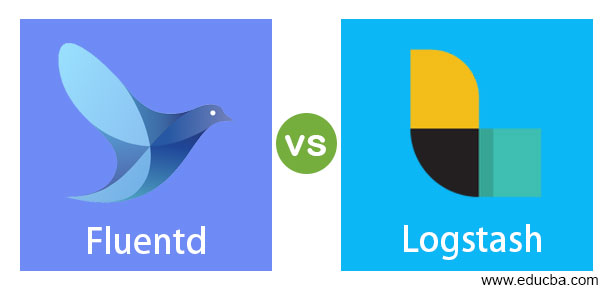Updated May 22, 2023

Difference Between Fluentd vs Logstash
- Log files record all the relevant information and events in a computing system. They are vital for any computing system as they illuminate all the changes in a design or an environment. This functionality helps users analyze and understand the situation, and in case of issues, it enables them to backtrack to the root cause. When working with scalable systems, it is crucial to establish a log management protocol.
- Centralised log management is a successful strategy that comprises sorting, processing, and storing logs created by various subsystems in a centralised repository at the system level.This will reduce the amount of time spent identifying problems. There are a lot of tools in the market that does the job. Let’s discuss fluent and logstash.
- Fluentd is an open-source big data tool to parse, analyze and store data. Treasure Data develop it and is part of the CNCF (Cloud Native Computing Foundation). It is completely designed in CRuby.
- Logstash is an open-source tool to parse, analyze and store data in the Elasticsearch engine. The L in ELK stack stands for Logstash. It is developed in JRuby. It is very flexible with the inputs; it has over 50 plugins to connect to various databases, systems, and platforms to collect data.
Head to Head Comparisons Between Fluentd vs Logstash (Infographics)
Below are the top comparisons between Fluentd and Logstash:
Key Differences Between Fluentd vs Logstash
Let us discuss some of the major key differences between Fluentd and Logstash:
- Logstash, as a part of ELK stash, has an inbuilt visualizing tool, kibana. It can view logs, search results, events,, etc. Fluentd provides better integration with CNCF projects like Prometheus etc., as it is also a part of CNCF. Fluentd also includes support for Elastic.
- Linux, as well as Windows OS, supports both tools.
- Fluentd supports way more third-party plugins for inputs than logstash, but logstash has a central repo of all the plugins it supports in github.
- Logstash consumes more memory than that fluent, but otherwise, both the tools’ performance is similar.
- Event routing plays a crucial role in log collection. Logstash uses a procedural approach of if-else statements in routing the events. It is easier for programmers well-versed in procedure programming. E.g., If <condition> then <action>. Fluent uses tags. An effort is defined for every tag; if the event matches its tag, it follows its appropriate action.
- Eg: <match tag> type action…</match>. Fluentd’s approach is more descriptive, and useful in complex routing.
- Logstash is limited to a fixed-size on-memory queue that can hold on 20 events. It needs an external queue to maintain continuity across restarts. You can overcome this challenge by using Kafka or Redis as a centralized buffer, which enhances data reliability. It is crucial to handle failure models appropriately, especially if the applications cannot tolerate any data loss. Fluentd has a buffering system that is highly configurable as it has high in-memory.
- Logstash offers a metrics filter to track certain events or specific procedures. It returns the logs that are related to the metrics search, and the search results can be visualized in
- A third-party configurable plugin such as Graphite. Fluentd has an in-built monitoring agent that can be queried to return the status on specific tags. It also enables the integration of monitoring plugins with the monitoring stack.
- A data forwarder is a unit that carries data from an origin point to a destination point. A shipper is a unit that automates backing up a database, log files, and data from the central (primary) server to a secondary server. Both tools have forwarders that are capable of detecting failures in shippers. When a forwarder detects a failure, it switches to another shipper.
Comparison Table
Let’s look at the top comparisons between Fluentd vs Logstash.
|
Fluentd |
Logstash |
| Event Routing is done using algorithmic if-then statements. | Event Routing is based on tags. |
| Has a fully functional enterprise support | Enterprise support is not available. |
| All the plugins are decentralized. | The centralized location for all supported plugins is GitHub. |
| Built-in reliability is offered for transportation, but it isn’t easy to configure. | It does not offer in-built reliability, but you can integrate Redis for reliability. |
| It uses less memory when it comes to performance. | It uses more memory. |
| Developed in CRuby | Developed in JRuby, it is mandatory to have Java running in the system. |
| Fluentd does not support multithreading as it is restricted by GIL (Global interpreter lock) | Logstash supports multithreading |
| Fluentd has built-in parsers like json, csv, XML, regex, and it also supports third-party parsers. | Logstash supports more plugin based parsers and filters like aggregate etc. |
| Fluentd has a simple design, robust and high reliability. | Logstash is modular, interoperable, and has high scalability. |
Overall, both tools have their own pros and cons, as we have seen earlier. Selecting a tool is completely based on the system and its requirements. Developers commonly consider Logstash as well-suited for monolithic applications, while they often prefer Fluentd for applications or services hosted on Docker.
Recommended Articles
We hope that this EDUCBA information on “Fluentd vs Logstash” was beneficial to you. You can view EDUCBA’s recommended articles for more information.

